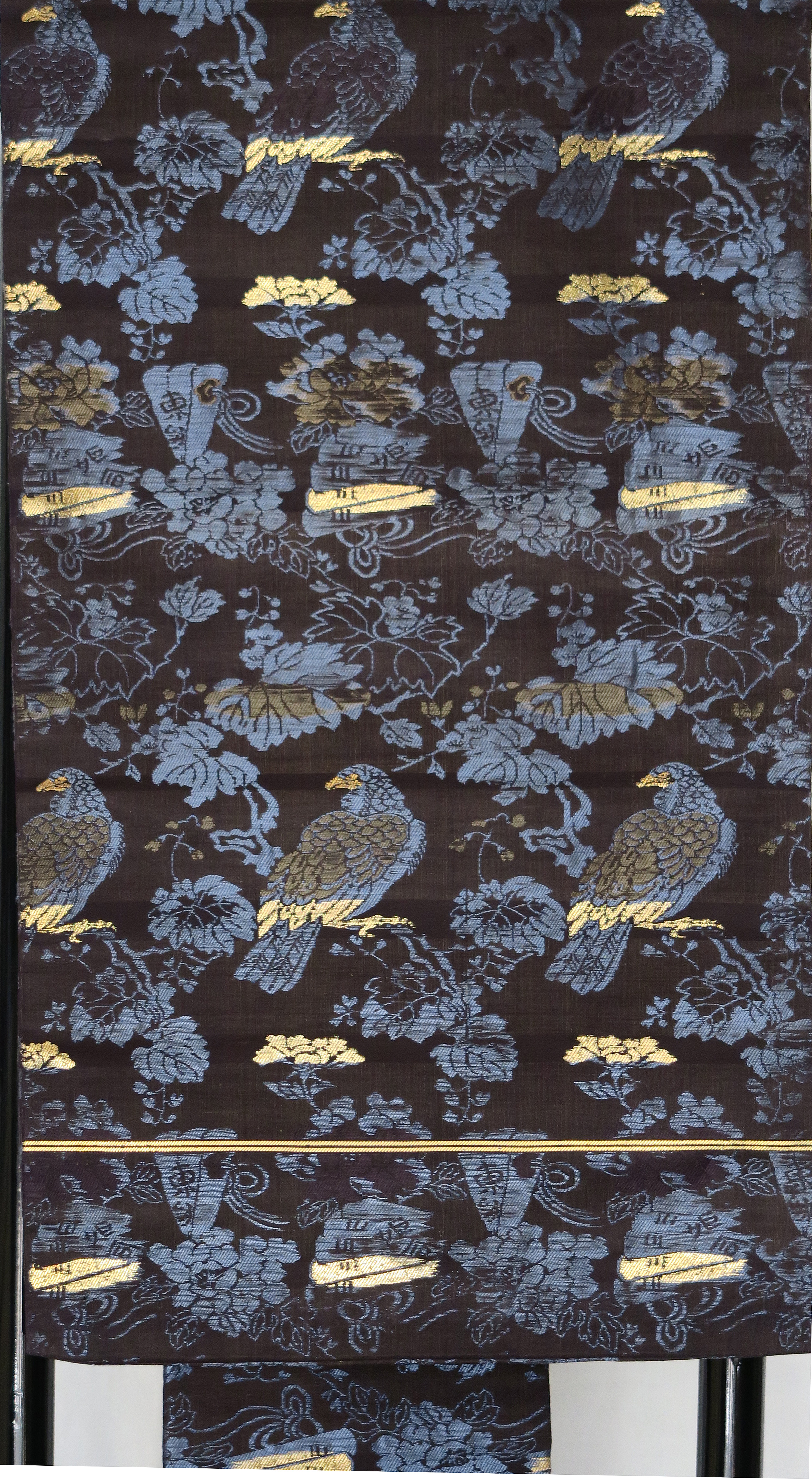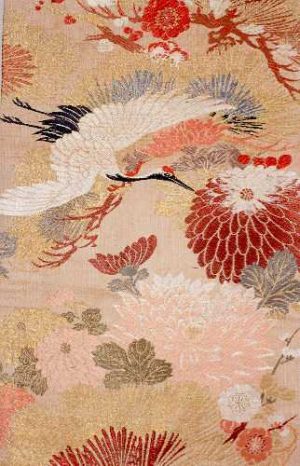Description
This is a striking Nagoya Obi exhibiting a rare shade of lapis as well as bright sections of gold highlighting the unusual design. A Nagoya Obi is more of a structural nomenclature than a definition of a type of Obi from Japan’s past. Originally, there were Maru Obi, Fukuro Obi and Han Haba Obi. The most formal was the Maru Obi, wherein there was but one seam down the length of one side; the Fukuro Obi which had two seams with differing fabric on the back from the front; while the Han Haba was traditionally a man’s narrow obi. The Nagoya Obi resulted from the desire on the part of women to have an obi that was easier to tie than the traditional Maru or Fukuro Obi. Prior to the twentieth century, clever women began to double over the wider portion of the obi to create a new structure that was one-third traditional width and two-thirds half the width. This became the Nagoya Obi which began to be produced commercially (using machines) during the Taisho Era (1912-1926).
This fascinating Obi represents one of the better preserved Nagoya Obi. It appears to have been created from a full two lengths of a hard edged woven Obi Silk deliberately sewn together to create the desired shape of the Nagoya Obi. This indicates that the individual for whom this obi was created was a young woman aware of the new style of obi, as well as one who could afford to have such a brilliant obi created for her. This image is further reinforced with the choice of color and symbolism. Ordinarily, an obi with this dark colored background would have indicated an older woman had chosen the fabric. However, because the design is in a shade of blue that is easily seen, highlighted with the bold strips of shiny gold, it becomes evident that this dramatic obi belonged to a young, fashionable woman.
The overall pattern encompasses repeats of a striking Hawk/Falcon (Taka) perched on very old Grape (Budo) Vines under which bloom gorgeous Peonies (Botan). The Hawk or Falcon is often considered the king of birds in Japan. Warriors especially liked the bird because of its fierce and powerful nature, as well as the visually striking patterns of its plumage. Banners with Hawks have been used since the Heian Era (794-1184), when the bureaucracy included an Office of Falconry. While grapes had been available in Japan for a very long time, their use in design didn’t occur until the advent of Buddhism. This symbol, as well as the gorgeous peony, had been imported from China; and, as it represented the Chinese Empress, it further establishes the sophistication of the wearer as well as her probable Samurai lineage.









